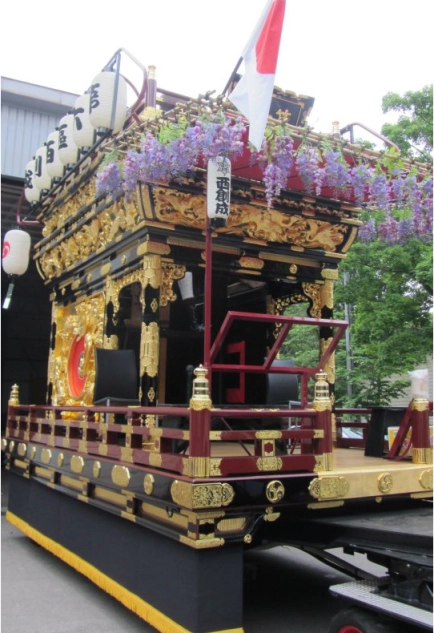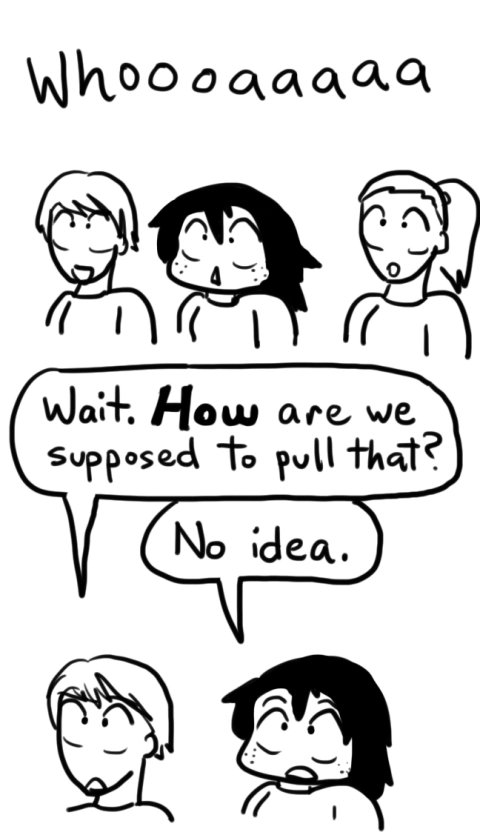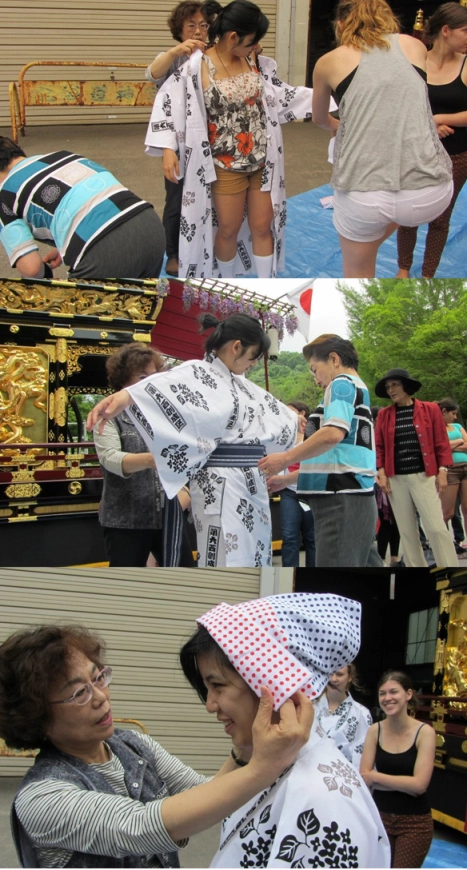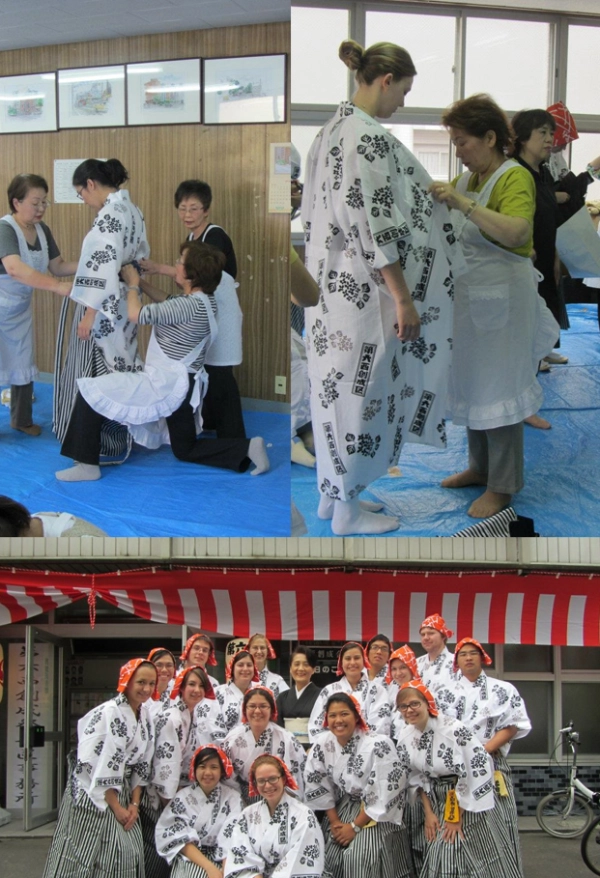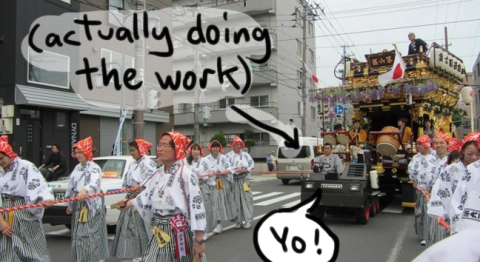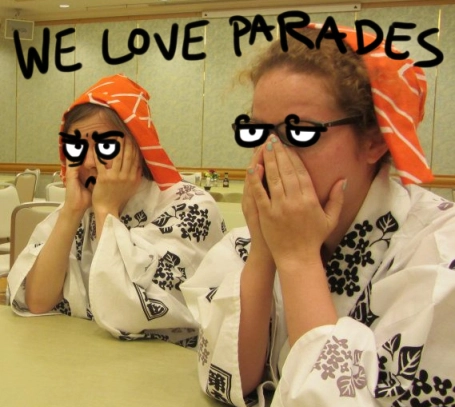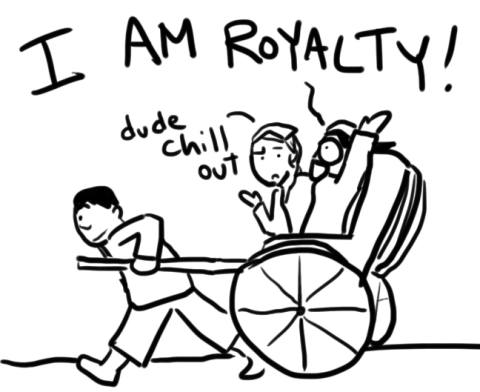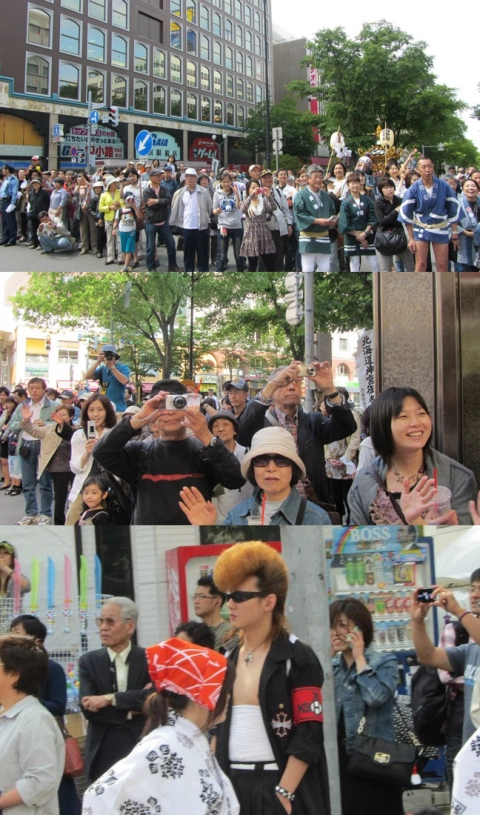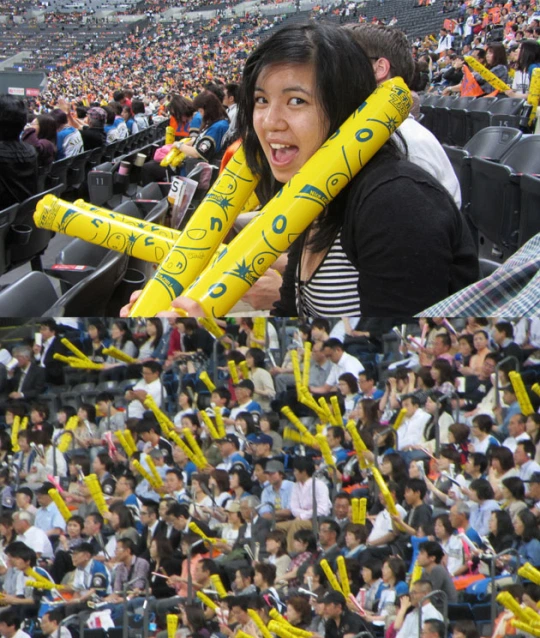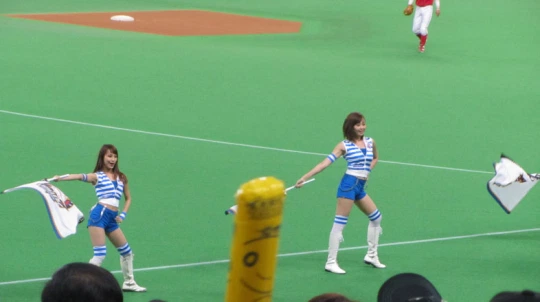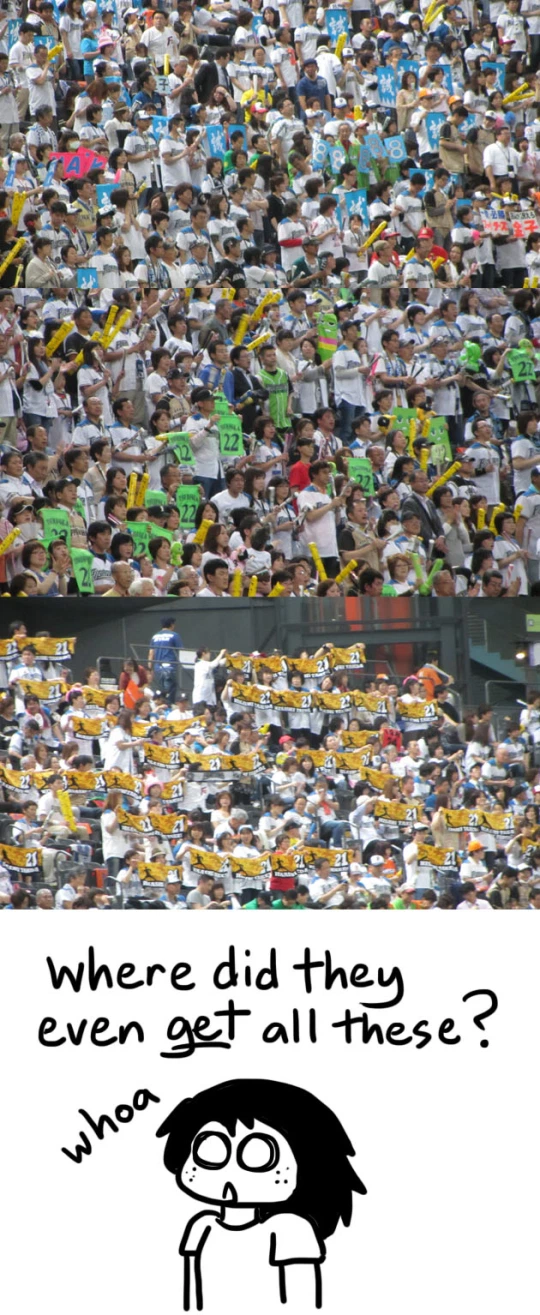There’s this festival that takes place in Sapporo every year celebrating the Hokkaido Shrine. One of the ten largest celebrations in Japan, it takes place in mid-June to welcome the summer. The Hokkaido Shrine Festival, as it is creatively named (also known as: the Sapporo Festival) features a parade with floats, music, and four mikoshi (portable shrines) that are marched around the city.
I believe the mythology is that four deities reside in the Hokkaido Shrine: Okunitama, the god of the land in Hokkaido, Onamuchi, the god of developing the land, Sukunahikona, the god of healing, and the soul of Emperor Meiji. According to legend, these four deities ride around Sapporo in the four parade mikoshi. That way, they get to view the city, see how their people are doing, and basically check in on how the world is doing.
It sounds like an interesting parade. Luckily for my group, it was taking place our last weekend in Japan. We would get to see it! Right?
Not exactly.
The sensei who led our trip was actually from Sapporo before moving to America. We discovered that she had all the connections. One of these connections was somehow getting the city to let we Americans march in the parade.
But not only were we marching in the parade…
We were:
- Pulling one of the floats.
- Wearing traditional Japanese yukata provided by the city.
- Going to not only be in the parade, but also be at the front of it, as the leading float in the whole shindig.
I still have no idea how our sensei pulled that one off, but she did. So, a few days before the parade, she took us to see the monster we were pulling…
And then, unbeknownst to us, the people in charge of the parade also had a yukata for us to try on. They just wanted to make sure it fit. Our sensei heard this—and immediately shouted,
So, once again, I found myself being forcibly dressed into Japanese clothing:
After fitting several kids in the yukata– and determining what sizes would be needed– we were ready. A couple days later, the morning of the parade arrived. We woke up at the wonderful hour of 5 in the morning and bused over to the preparation building, where not just I, but everybody got prepped to look like a true Nihonjin:
We discovered, to our great relief, that the float was actually pulled by a cart. We would only have to walk in front of it, symbolically carrying two ropes attached to the front.
And the parade began! We walked…
…and walked…
…and walked…
…and walked…
What our sensei hadn’t mentioned was that the parade was going to last, oh, like seven hours or so. And we were all wearing traditional Japanese geta sandals, which aren’t the comfiest.
At least the seven hours weren’t nonstop. We did have a lunch break in the afternoon, with free food!
And I– don’t hate me for this– cheated at the end. At the very front of the parade were three rickshaws for paraders to ride in. Our sensei, unable to walk for so many hours, had cozied up in one the whole time. That left two available for us. I’ve never ridden a rickshaw before. This was my chance!
The crowds that came out to see the parade were incredible! My gaijin group was especially ogled over.
Walking with your friends, getting treated to breakfast and a buffet lunch, getting to wear traditional yukata, and being gawked at by passerby? It was super fun. I still have no idea how our sensei managed to hook us up with this. It was a once-in-a-lifetime kind of thing.
So, at the end of the parade, sore feet and hungry stomach regardless, I felt extremely lucky.
Even the bruises from my tightly-wrapped yukata couldn’t bring me down.


